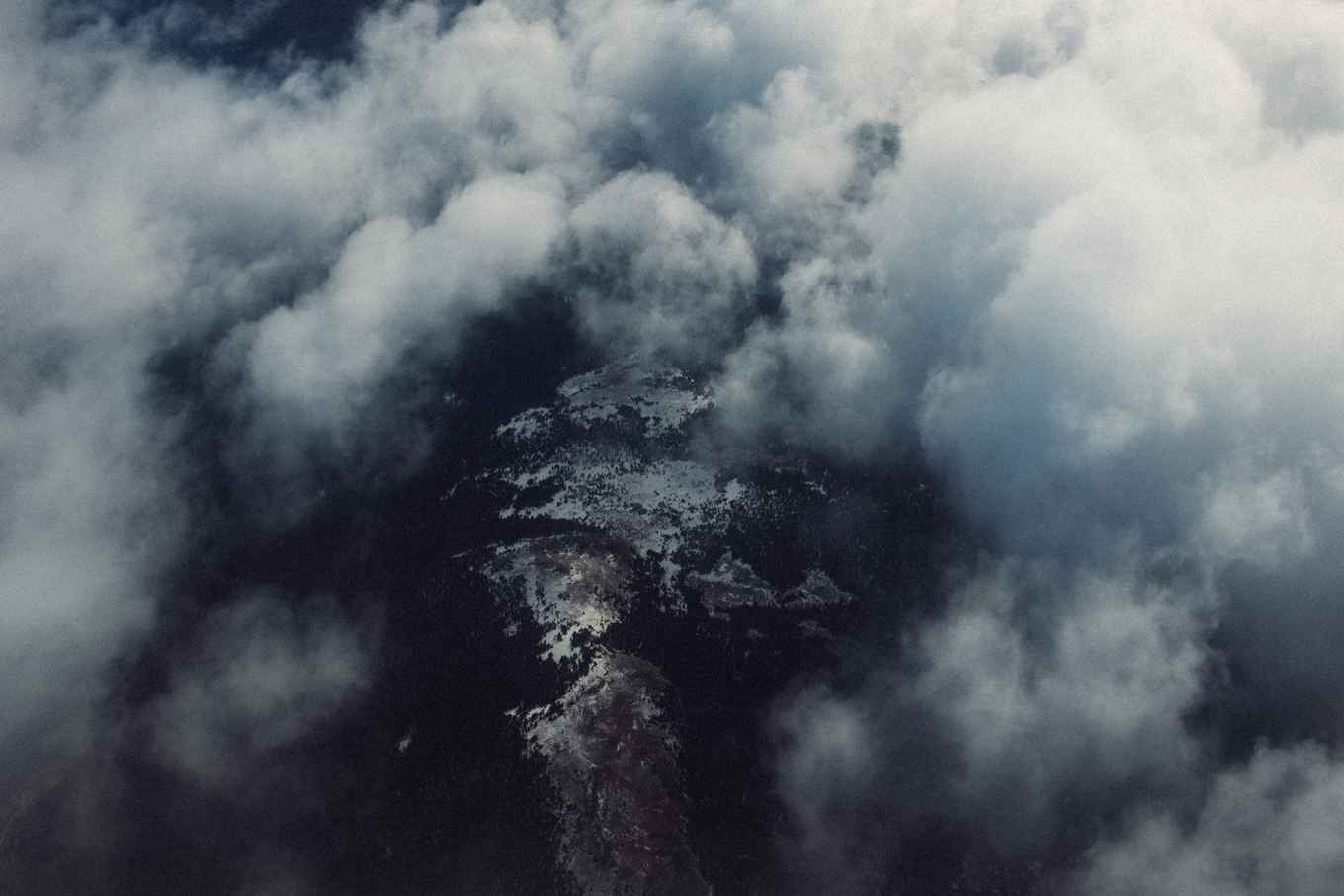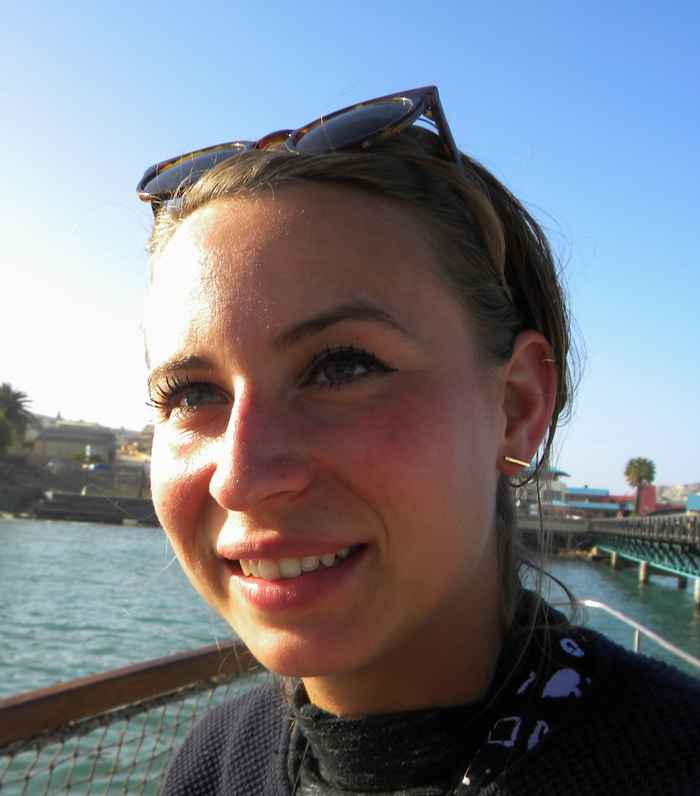‘Different perspectives go together very well in research into water and desertification’
Sofie te Wierik talks about her IDA doctoral research
19 December 2019

Green water and atmospheric water
Green water is the water that can be found in unsaturated soil columns, thus not groundwater that can be found much deeper. All precipitation that falls from the sky onto the ground is infiltrated by the soil and ultimately becomes groundwater or flows back to the ocean. We understand the cyclical process of precipitation, absorption and return to the atmosphere more and more based on the natural sciences. However, we are seeing that these cyclical patterns are changing on a large scale due to different land use. We are trying to understand the complex relationships of all those ecosystem components better. There is a policy for groundwater and surface water, but strangely enough not for green water and atmospheric water, or rainwater in the uppermost layer of the soil and in the sky. I am researching in particular how can use good policy to respond to and anticipate such complex systems and issues.”
“We also discuss atmospheric water in the research. This concerns the water particles in the sky. There are companies that offer machines which extract water from the sky and can make about 50 litres of liquid water from this per day. Those companies say it is a major discovery for dry regions, but what is the impact if you start doing this on a very large scale? Who owns the water in the sky in that case? Under which conditions do people have access to this water? This is an interesting follow-up question to the research based on new technologies that could create very different balances of power in terms of water management.”
Holistic system
But how do you model this problem if you have data from different fields of study? And where do you start?
“I was first occupied with a literature review, which has also resulted in an article, after which we started looking into how we could focus this into a general subject and we want to carry out more case studies in dry regions in any case, which also relate to land degradation. The regions we are looking at include Sub-Saharan Africa, part of China and Latin America or Australia. It is important to use systems from climate sciences, hydrology, ecology, but also economics and public administration in order to arrive at a more holistic system that can answer the question.”
With reference to your literature review, which trends have stood out for you up until now?
“The article that we are writing is about putting forward arguments why we should manage green water and atmospheric water in an integrated manner at all. Within the EU and the Rhine riparian states, for example, there are agreements about water quality and how much water a particular country may extract from the banks, for example, so each country has sufficient water. However, in that case you are still only talking about surface water. The missing link is no agreements have been made yet about green water and atmospheric water. We are still missing many concepts here on which to base policy. It is therefore very exciting to be able to work on something new like this.”
Is it difficult to get an interdisciplinary article published?
“With regard to this subject, I think that there is a level of acceptance within science that these types of issues need to be examined on the basis of a more integrated approach. There is even acceptance within the various ‘journals’ that more interdisciplinary research needs to be published. However, I don’t know yet what this means in concrete terms. As a whole, the more quantitative approaches from the natural sciences are worlds apart from the more qualitative approaches in the social sciences. Nevertheless, I believe that these different perspectives go together very well. A first article will appear soon in the journal ‘WIREs Water’ based on my literature review. However, this is a journal that specifically focuses on interdisciplinary research within the theme of ‘water’. Nevertheless, I can easily imagine that if the article is rewritten slightly that it could also be published, for example, in a social geography journal.”

Nature management and policy
Why is there still so little legislation and policy for green water and atmospheric water?
‘Water policy is often composed from the perspective of a colonial system and implemented in Asian and African countries. That legislation originates from countries where severe droughts do not actually occur (with the exception of Spain perhaps). Managing the surface water is very natural for the Netherlands, for example, and we have more than enough of it here. In some countries, there is already not enough surface water to manage well, let alone enough water to have to start worrying about soil water and water in the sky.’
How do these problems relate to the Netherlands?
A green water scarcity map has been developed. This means that if you look at the total amount of green water that you have at your disposal, a lot of it is used for the production of crops, as a result of which the water can be used less and less by untouched nature. Untouched nature is responsible, in turn, for so-called ecosystem services, such as the filtering of water, replenishing groundwater and the storage of carbon from the air. That map therefore indicates which countries have green water shortages and they are all countries in Northwestern Europe, including the Netherlands. This means in fact the lion’s share of green water is not used to support these natural processes. Therefore, there is also not enough space in the Netherlands for natural systems in order to perform ecosystem services, particularly hydrological processes. We therefore need to ensure that not everything is swallowed up by crop farming.
Future challenges and innovative solutions
Which major challenges do you see before you?
“I still find it difficult at this stage of the research to see where the interdisciplinarity ties in with all of this and how you can conceptualise this. In which way am I going to combine all the different insights with each other? I still need to have a long think about this. Perhaps I don’t see it because I have an interdisciplinary background. It is natural for me to include numerous disciplines in your approach. Working on the basis of interdisciplinary research also means that it’s the intention that you need to come up with new frameworks in which you make that combination and I still see that as a major challenge. Fortunately, I still have four years to do that here, in any case”
How do you see the connection of the research with the Future Planet Studies programme?
In any case, the themes tie in well with ‘Water Management’ in the Future Planet Studies programme, for example. I think it would be really nice to incorporate the findings of the research into the curriculum. I still don’t know precisely how this should be done. In the case of the ‘Interdisciplinary Project’ of Future Planet Studies, you have nice projects that the students could do and it would be great if a number of Bachelor’s theses about this subject would appear. The IDA grants are structured in such a way that PhD students can be trained in an interdisciplinary manner, so we can (possibly) pass that on once again in the education. I never really stopped to consider that your focus in doctoral research is very monodisciplinary in general, and that it is quite strange, therefore, that there are hardly any interdisciplinary doctoral programmes, even though the value of interdisciplinary research is increasingly recognised.

IDA grant
The Executive Board provides a one-off tool to boost collaboration between faculties on research projects that tie in closely with the interdisciplinary Bachelor’s programmes: the Interdisciplinary Doctorate Agreement (IDA). The IDA is an agreement with a research proposal for a joint doctoral position (a kind of internal joint doctorate).